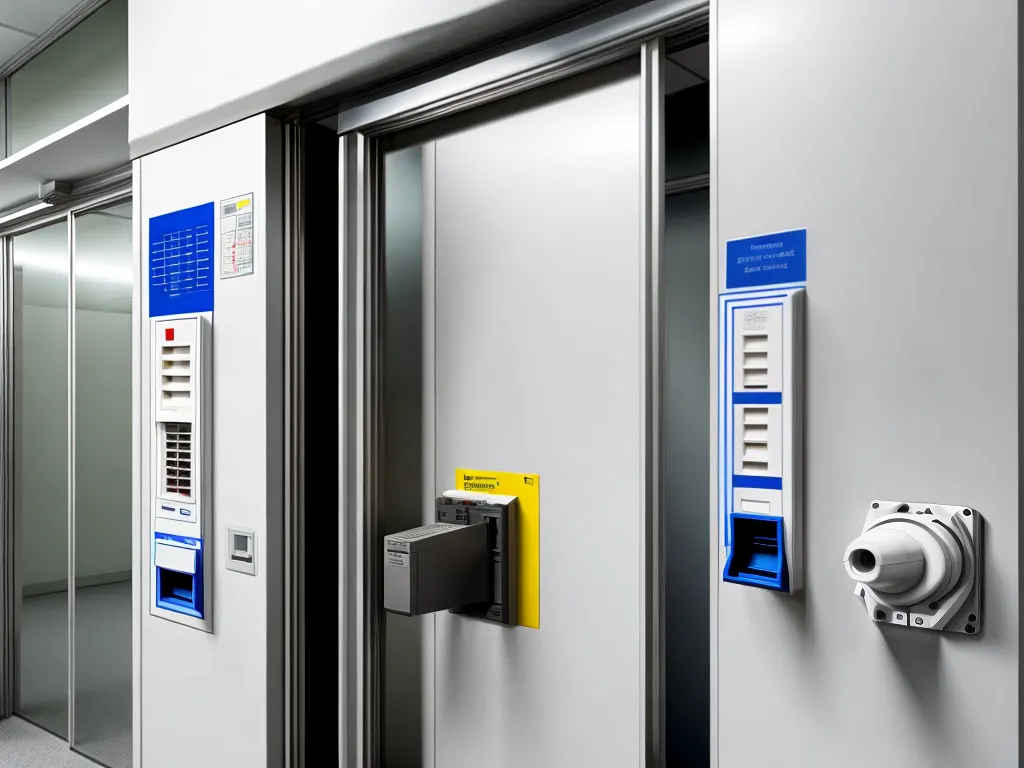
Evaluating the 2005 NEC Changes for Circuit Breaker Accessibility in Commercial Buildings
I have been tasked with evaluating the 2005 NEC changes for circuit breaker accessibility in commercial buildings. As an electrical engineer, it is critical that I have a thorough understanding of these code updates in order to ensure compliance in the buildings I design. In this article, I will provide an in-depth look at these changes and how they impact commercial electrical systems.
Overview of the 2005 NEC Changes
The 2005 edition of the National Electrical Code (NEC) contained several significant changes related to overcurrent protection and circuit breaker accessibility. Some of the key updates include:
- New requirements for arc-flash hazard warning labels on equipment.
- Restrictions on where service disconnects can be installed.
- Expanded rules for the grouping and labeling of disconnects.
- New standards for lockout/tagout procedures.
- Modifications to requirements for the mounting and protection of overcurrent devices.
These changes were made to improve safety for workers servicing and maintaining electrical systems. By making circuit breakers more visible and accessible, the risk of arc flash hazards is reduced. Proper lockout/tagout procedures also help protect technicians working on live systems.
Impact on Commercial Building Design
The 2005 NEC changes have important implications for the design of commercial buildings. Some of the key areas impacted include:
Service Entrances and Disconnects
- Main service disconnects must now be installed at readily accessible locations either inside or outside the building. This allows for easier access by service personnel.
- Only one main service disconnect is permitted for each building or structure. This simplifies the arrangement of service entrances.
- Grouped disconnects must have appropriate labels indicating which loads or equipment they serve. This aids identification and maintenance.
Distribution Equipment Rooms
- Overcurrent devices, including circuit breakers, can no longer be located in incidental storage spaces. They must be in dedicated electrical rooms or closets.
- Electrical rooms must meet minimum size requirements based on the voltage and size of equipment within. This provides safe working space.
- Equipment doors must open at least 90 degrees to ensure safe access. A clear working space must be maintained in front of equipment.
Panelboards and Switchboards
- The 2005 NEC introduced a new requirement that panelboard cabinets must be grounded. This protects against electric shock hazards.
- Circuit directories are mandatory for all panelboards. These schematics help identify breakers protecting each circuit.
- Back-fed breakers must be secured by additional fasteners or mechanical means. This prevents loosening due to short circuit forces.
Implementing the Changes
Complying with the 2005 NEC rules requires close coordination between electrical and architectural designers. Here are some tips for successful implementation:
- Review building designs early to identify suitable locations for service disconnects and electrical rooms.
- Specify panelboards with grounded enclosures and complete circuit directories.
- Include arc flash labels and detailed one-line diagrams to improve electrical safety.
- Provide adequate clear working space around all distribution and control equipment.
- Incorporate lockout/tagout provisions for large equipment like switchgear and motor control centers.
Conclusion
The 2005 NEC updates related to circuit breaker accessibility provide critical safety improvements for personnel working on commercial electrical systems. By enhancing equipment identification and creating dedicated electrical spaces, risks associated with maintenance and troubleshooting are substantially reduced. As an electrical engineer, I must ensure these code changes are correctly applied to all of my building designs in order to protect workers and avoid violations. Proper implementation does require coordination with architects and owners, but the benefits are well worth the extra effort.